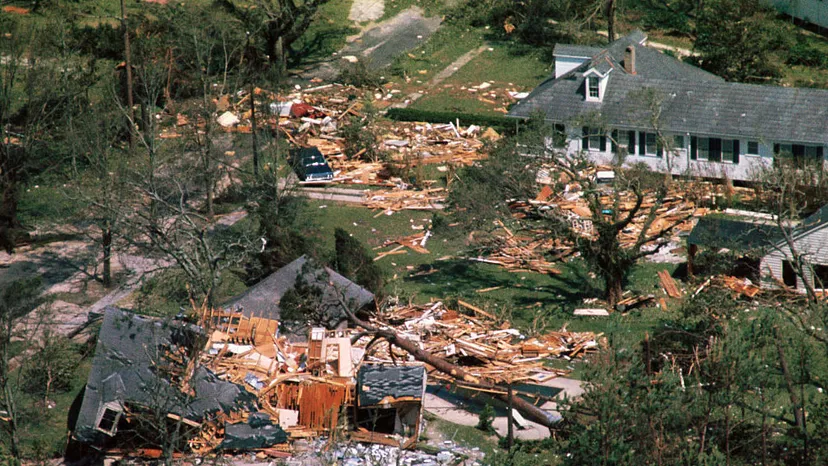Navigating Insurance Claims for Property Damage from Storm Surges: Challenges and Considerations in Coastal Areas
Storm surges pose a significant threat to coastal communities, unleashing powerful waves and flooding that can cause extensive property damage and devastation. In the aftermath of a storm surge, property owners in coastal areas often face unique challenges when filing insurance claims for the resulting damage. From coverage limitations to disputes over causation, navigating the insurance claims process requires careful consideration and expert guidance. Here, we explore the distinct challenges involved in filing insurance claims for property damage caused by storm surges, with insights from the Law Offices of Karla Lopez-Fernandez.
Understanding Storm Surge Damage
Storm surges occur when strong winds from a hurricane or tropical storm push seawater inland, resulting in rapid and extensive flooding along the coast. The force of the water can cause structural damage to buildings, erode foundations, and inundate properties with debris and sediment. Additionally, saltwater intrusion can lead to corrosion of electrical systems, appliances, and other components, further exacerbating the damage.
Unlike other forms of water damage, such as rainwater intrusion or plumbing leaks, storm surge damage presents unique challenges due to its sudden and catastrophic nature. Moreover, the sheer force and volume of water involved in a storm surge can result in widespread destruction, making the claims process more complex for affected property owners.
Coverage Limitations and Exclusions
One of the primary challenges in filing insurance claims for storm surge damage is navigating coverage limitations and exclusions in insurance policies. While standard homeowners insurance policies typically cover damage caused by wind, they often exclude coverage for flooding, including storm surges. As a result, property owners in coastal areas may need to purchase separate flood insurance policies to protect against storm surge-related losses.
However, even with flood insurance coverage, policyholders may encounter limitations and exclusions that affect their ability to recover compensation for certain types of damage. For example, many flood insurance policies do not cover damage to landscaping, fences, or detached structures, and may impose limits on coverage for personal belongings stored in basements or below-ground areas.
Disputes Over Causation and Scope of Damage
Another challenge faced by property owners filing insurance claims for storm surge damage is disputes over causation and the scope of the damage. Insurance companies may seek to minimize their liability by attributing damage to other factors, such as wind-driven rain or pre-existing structural deficiencies, rather than the storm surge itself. Additionally, determining the extent of the damage and the cost of repairs can be complicated by factors such as saltwater corrosion and the presence of sediment and debris.
Navigating the Claims Process
Navigating the insurance claims process for storm surge damage requires careful attention to detail and proactive communication with the insurance company. Property owners should take the following steps to maximize their chances of a successful insurance claim:
Document Damage: Thoroughly document the extent of the storm surge damage, including photographs, videos, and written descriptions. Keep records of any emergency repairs or mitigation efforts undertaken to prevent further damage.
Review Insurance Policy: Review your insurance policy carefully to understand the scope of coverage, exclusions, and limitations that may apply to storm surge damage claims. Pay attention to policy deductibles, coverage limits, and any additional coverage options, such as flood insurance.
Notify Your Insurance Company: Promptly notify your insurance company of the storm surge damage and file a claim as soon as possible. Provide detailed information about the cause of the damage, the extent of the losses incurred, and any mitigation efforts undertaken to minimize further damage.
Seek Legal Assistance: Consider seeking assistance from a qualified attorney experienced in handling insurance claims for storm surge damage. An attorney can review your insurance policy, advocate on your behalf during the claims process, and help resolve disputes with the insurance company.
The Role of the Law Offices of Karla Lopez-Fernandez
At the Law Offices of Karla Lopez-Fernandez, we understand the unique challenges faced by property owners in coastal areas when filing insurance claims for storm surge damage. Our experienced legal team is dedicated to providing personalized representation to clients seeking to recover insurance benefits for property damage caused by storm surges. We work tirelessly to advocate for our clients’ rights and ensure they receive the compensation they deserve.
Whether you are facing coverage disputes, denied claims, or challenges with documenting the extent of the damage, our firm is here to help. With our in-depth knowledge of insurance law and commitment to client advocacy, we strive to alleviate the burdens associated with storm surge damage claims, allowing our clients to focus on restoring their properties and moving forward.
Conclusion
Filing insurance claims for property damage caused by storm surges in coastal areas presents unique challenges, from coverage limitations to disputes over causation and the scope of the damage. By understanding the complexities of the claims process and seeking assistance from experienced legal professionals, property owners can navigate these challenges effectively and ensure they receive fair compensation for their losses. With the support of the Law Offices of Karla Lopez-Fernandez, clients can rest assured that they have a dedicated legal advocate on their side, fighting for their rights and interests throughout the claims process.





